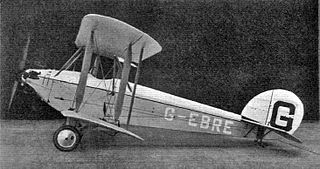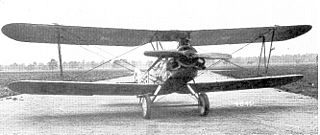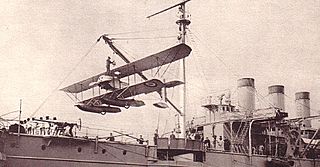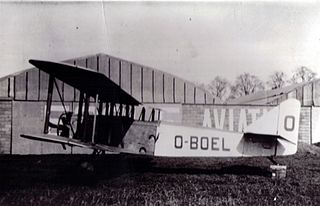Operators
 Belgium
Belgium  United Kingdom
United Kingdom
- Central Aircraft Flying School
| Centaur IV | |
|---|---|
| Role | three-seat biplane trainer |
| Manufacturer | Central Aircraft Company Limited |
| Designer | A A Fletcher |
| First flight | 1919 |
| Primary user | Central Aircraft Flying School |
| Number built | 8 |
The Central Centaur IV, a.k.a. Central C.F.5, was a British civil two/three-seat biplane aircraft produced by Central Aircraft Company Limited of London.
The Centaur IV was a two-seat wire-braced, fabric-covered wooden biplane designed by A.A. Fletcher. It was the first original design to be built by Central Aircraft Company at Kilburn, London during 1919. The prototype had a 70 hp (52 kW) Renault air-cooled V-8 engine but the seven production aircraft were fitted with an Anzani radial engine.
The Centaur IV was originally proposed in two versions:
No market existed for private ownership at that time, so the eight aircraft were all built as three-seaters. All the aircraft were initially used by Central Aircraft for joyriding or instruction at Northolt Aerodrome. The fifth aircraft was fitted with a three-float undercarriage. It was used for a week giving joyrides at Southend-on-Sea. It was converted into a landplane later in 1920 and crashed in October 1920.
As the postwar slump continued, some of the aircraft were sold in Belgium and were still operating in 1938. The last survivor was destroyed in the German invasion of Belgium in May 1940.
Data from Flight060319 [1]
General characteristics
Performance

The Nakajima E4N was a Japanese shipboard reconnaissance aircraft of the 1930s. It was a two-seat, single-engine, equal-span biplane seaplane used primarily by the Imperial Japanese Navy.

The Central Centaur IIA, a.k.a. Central C.F.2a, was a British civil six-passenger joyriding biplane aircraft produced by Central Aircraft Company Limited of London.

The Avro Club Cadet was a 1930s single-engined British biplane trainer aircraft, designed and built by Avro as a development of the earlier Cadet. It was planned for private and club use and, unlike the Cadet, was fitted with folding wings.

The Blackburn L.1 Bluebird was a British single-engine biplane light trainer/tourer with side-by-side seating, built in small numbers by Blackburn Aircraft in the 1920s.

The Bristol Taxiplane and Bristol Primary Trainer were British single-engine biplane light aircraft built by the Bristol Aeroplane Company in the early 1920s. A total of 28 were built, being mainly used as trainers.

The Bristol Bloodhound was a British two-seat reconnaissance/fighter aircraft designed and built by the Bristol Aeroplane Company as a possible replacement for the Bristol F.2 Fighter for the Royal Air Force. It was unsuccessful, only four prototypes being built.

The Anzani 10 was a 1913 10-cylinder air-cooled radial aircraft engine. It powered several experimental aircraft and also the later production versions of the Caudron G.3 reconnaissance aircraft, the Caudron G.4 bomber/trainer and the first production Cessna, the Model AA.

The Short Type 827 was a 1910s British two-seat reconnaissance floatplane. It was also known as the Short Admiralty Type 827.

The Caudron J Marine was an amphibious, two-seat, biplane equipped with floats and wheels, similar to the earlier Caudron J floatplane.
The Westland Woodpigeon was a British two-seat light biplane designed to compete in the 1924 Lympne light aircraft trials.

The Fairey Ferret was a 1930s British general-purpose biplane designed and built by the Fairey Aviation Company. It performed well in trials but was not ordered into production.
The London and Provincial Fuselage Biplane was a British single-engined two-seat training aircraft of the First World War. While the aircraft demonstrated excellent manoeuvrability, only a single example was built.
The Stampe et Vertongen RSV.22 was a training biplane produced in Belgium in the 1920s.

The Stampe et Vertongen RSV.32 was a trainer aircraft produced in Belgium in the early 1920s. Designed originally for the Stampe et Vertongen flying school, the Belgian Air Force became a major operator of the type, where it became the first aircraft of entirely Belgian design and manufacture to enter service. Many others were purchased by flying clubs and private owners. No RSV.32 was in existence by the end of World War II.

The Caudron C.161 was a lightweight French two-seat biplane designed by Caudron for sport or flight training use. A conventional biplane with a square fuselage powered by a 65 hp (48 kW) Salmson radial engine. It had two cockpits in tandem with dual controls in both, when not used as a trainer the controls could be removed from the rear cockpit. A variant, the C.168, with a more powerful 70 hp (52 kW) Anzani radial engine was also available.

The Pander E was the first indigenous Dutch training aircraft, used by clubs and also privately owned. A two-seat, single-engine biplane, 17 were built in the Netherlands from 1926 with engines of increasing power.

The Potez VIII was a French training aircraft which first flew in 1920. Originally it had a very unusual vertical inline engine and a four-wheeled undercarriage, though the production version was more conventional.

The Caudron Type D was a French pre-World War I single seat, twin-boom tractor biplane, a close but slightly smaller relative of the two seat Caudron Type C. More than a dozen were completed, one exported to the United Kingdom, where they may also have been licence built, and three to China.

The Raab-Katzenstein RK.9 Grasmücke (Hedge-sparrow) was a 1920s German two-seat touring, advertising and training biplane. It was one of many designs from several countries aiming to provide low cost flying and was quite successful, with about twenty built.
The Bulté RB.1 was a Belgian training and touring biplane first flown in 1928. Five examples flew with clubs and with private owners in contests and rallies.